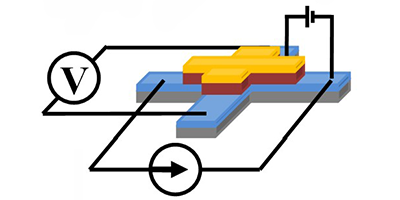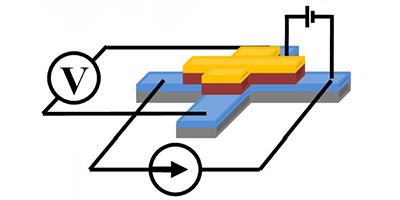Controlling Magnetism by Electricity
Modern hard drives store information by controlling the magnetization of their memory elements with magnetic fields. Such devices might become more energy efficient if the magnetization could be controlled by electric fields, but many materials so far investigated only function at very low temperatures. Now, researchers in Weigang Wang’s group at the University of Arizona, Tucson, and collaborators have shown that electric fields can efficiently control the magnetic properties of a thin cobalt film at room temperature. Their results reveal that small applied voltages can change the magnetic state of the material in a nonvolatile way—a crucial feature for memory devices.
Previous research showed that electric fields could switch the magnetization of thin ferromagnetic films, but the effect was always small and disappeared as soon as the field was turned off since it depended on electric field-induced charge rearrangements. Now, the authors have achieved a large, nonvolatile effect by inducing oxygen ions to migrate through an oxide layer and change the oxidation state of the cobalt thin film. The researchers sandwiched a few-atom-thick cobalt film between a metallic and an oxide layer and characterized the magnetic anisotropy of the cobalt film as a function of the polarity and duration of an electric field applied to the film. Voltages as low as a few volts resulted in a reversible and nonvolatile anisotropy change that was over two orders of magnitude larger than in previous studies. The effect caused changes in the sample’s transverse electrical resistance that could be used in electrically driven devices reminiscent of spin valves, although the speed of its buildup (tens of seconds) remains an obstacle for practical applications.
This research is published in Physical Review Letters.
–Katherine Kornei





